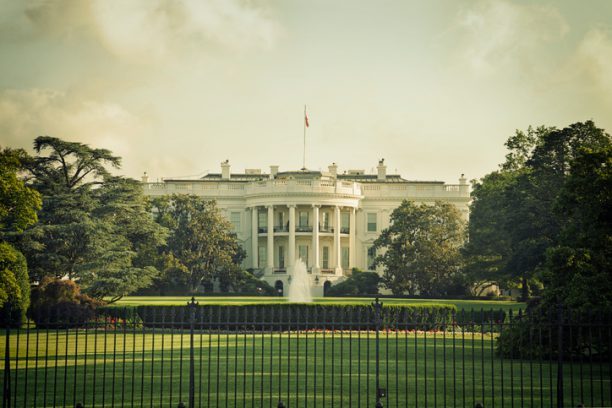
The Commercial Drone Alliance is an industry-led, 501(c)6 non-profit association “representing commercial drone end users and the broader commercial drone ecosystem.” As part of their efforts to ease broader adoption of commercial drones, the CDA works closely with government to advise on regulatory issues that affect the commercial drone segment.
In their discussions with OIRA, CDA representatives emphasized the economic potential of commercial drones, but told authorities that drone regulation had to keep up in order for that potential to be realized. “To get there, however, our nation’s regulatory framework must keep pace,” says a CDA statement. “… to promote American competitiveness and enable innovation to succeed, we must continue to move UAS rulemaking forward rapidly.
Concerning operations over people, the CDA pointed out the necessity for regulations that will regularly allow this type of operation. “Countless UAS use cases, with their associated safety and efficiency benefits, rely on the ability to fly over people,” says the CDA statement.
The CDA was clear, however, that the regulation must be handled carefully to allow safe flight over people without making the requirements so stringent that they can’t be reasonably met. One primary concern is how the FAA will evaluate risk. The FAA suggests that the kinetic energy of the aircraft be used as a major risk factor. This is thought to allow an estimation of potential harm – the heavier and faster the aircraft, the more damage it might do in crashing. This method provides a very incomplete view of risk, points out the CDA: it doesn’t take the alternatives to using a drone into consideration.
“For example, in addition to considering the kinetic energy of a small UAS hitting a person, regulators must consider the risks inherent in the dangerous tasks that UAS operations would replace,” says the CDA statement. “Thus, when considering the risks of flying a UAS over a film set, the agency must also consider the much larger risk of flying a helicopter over people for the same purposes…When considering the risks of a construction company flying lightweight UAS over an active worksite to inspect a structure or an infrastructure company inspecting its towers, the agency must balance that risk against the hazards faced by the worker who would otherwise have to climb a tall ladder, or scale the roof of a building to conduct the same visual inspection.”
“…If risk can be appropriately compared, and the use of UAS decreases overall risk, then the UAS application should be readily approved,” says the CDA.
Additionally, the CDA expressed concern over taking a narrow definition of “direct participant,” – those people involved in the mission, that the operator may be able to fly over. Taking too narrow a view of “participant” – for example, not considering other workers on a construction site to be participants – could risk making the rule impractical.
Drone security is also an important topic: and it’s an issue with the potential to damage the industry through either too much or too little regulation. On this subject, the CDA’s position is clearly defined. 1) Apply laws to all drone operators flying an aircraft over a certain weight, including recreational operators; 2) Enable technology solutions to policy problems; and 3) Establish a remote ID and tracking system for UAS.
Here the CDA is in agreement with the FAA representative’s views as expressed during last week’s Senate Committee Hearing. Both the CDA and the FAA representative have expressed a need for drone laws to apply to all operators, including the recreational operators currently protected from new rules by Section 336.
“Enabling technology solutions to policy problems” includes the rapid deployment of a robust Unmanned Traffic Management (UTM) system, which would mitigate many of the current concerns about drones in conflict with manned aircraft. Finally, the remote ID and tracking system would allow for better enforcement of drone regulations: preventing drone operators from being able to fly “anonymously” and allowing law enforcement or FAA officials to connect a drone in flight with an operator on the ground.
Meetings, hearings and testimony at the federal level have been frequent of late, as have reports from various government agencies about FAA and drone regulations. While opinions and viewpoints differ on the issues, there is one point that most stakeholders seem to agree upon: more drone regulation is needed, and quickly. The CDA meetings with OIRA represent another step in the process of moving drone regulation forward to allow for more varied operations and commercial applications in the U.S.
Miriam McNabb is the Editor-in-Chief of DRONELIFE and CEO of JobForDrones, a professional drone services marketplace, and a fascinated observer of the emerging drone industry and the regulatory environment for drones. Miriam has penned over 3,000 articles focused on the commercial drone space and is an international speaker and recognized figure in the industry. Miriam has a degree from the University of Chicago and over 20 years of experience in high tech sales and marketing for new technologies.
For drone industry consulting or writing, Email Miriam.
TWITTER:@spaldingbarker
Subscribe to DroneLife here.
